LIVING IN



Successful start-ups and resources for entrepreneurs
Americans can vote no matter where they are - find out how
The apps and programs that make life easier
SEPTEMBER-OCTOBER 2024 ARE YOU A SEAGULL OR A CHAMELEON? Tips for managing people across cultures






Welcome to the latest edition of Living in Singapore! In this issue, we'll explore the world of entrepreneurship and small business! Whether you dream of launching a start-up, freelancing, or scaling your existing company, this edition is packed with insights, advice, and inspiration to help you on your journey.
Inside, you’ll find articles about the steps to starting a business, personal experiences from entrepreneurs who’ve been there, and tips for making the leap into freelancing. We’ve also included resources for start-ups and small businesses and advice on managing people from different cultures.
Our goal with this issue is to motivate you, whether you’re just starting or looking to take your venture to the next level. Every great business begins with a single idea, and we hope the stories and resources shared here will

As we move into fall, the AAS team is busy putting together our first annual Fall Fest, sponsored by Smokey's BBQ. We've also got a Haunted Boozy Bus Ride that takes you to Universal Studios' Halloween Horror Nights – fun! Watch for our annual Thanksgiving celebration with AWA and XCL, Toys for Tots, and the next George Washington Ball. Be sure to check out the AAS Sports offerings, too,
EDITORIAL
Editor-in-Chief: Susan Williams communications@aasingapore.com
Publishing Editor: Melinda Murphy generalmanager@aasingapore.com
LAYOUT
Graphic Designer: Susan Williams graphics@aasingapore.com
ADVERTISING
Advertising Manager: Thila Chandra thila@aasingapore.com
COLUMNIST
Andrea McKenna Brankin
CONTRIBUTORS
Aimee, Olivia Go, Vaughan Graff, Richard Hartung, Sorelle Henricus, Kyle D. Hegarty, Melinda Murphy, Thomas Reeb, Kinjal Shah, Gian S., Glenn van Zutphen, Tyler Wisler, Kay Yin
AMERICAN ASSOCIATION BOARD MEMBERS
President: Ashok Lalwani
Vice President: Mkulima Britt
Treasurer: Ed Fitzpatrick
Secretary: Jennifer Yarbrough
Directors-at-Large: Christopher Ellis, Blair Hall, Idil Hasbay, Daniel Moss, Tianna Nguyen, Michelle Reeb, Priyesh Shah
AmCham: Dr. Hsien-Hsien Lei
AWA: Julia Tan
SAFL: Dan Levine
SAS: Kyle Aldous
The American Club: Dan Gewirtz
Non-Voting Members
US Embassy: Lisa Liao
US Navy COMLOG WESTPAC: RDML Todd "Chimi" Cimicata
AAS: Melinda Murphy
Editor-in-Chief
PUBLISHER – AMERICAN ASSOCIATION
American Association of Singapore (AAS) is a professional, not-forprofit organization established to enhance the well-being and living experience of Americans residing in Singapore and to promote relationships, both business and social, between Americans and those from different cultures and nationalities.
56A Boat Quay, Singapore 049845 admin@aasingapore.com • www.aasingapore.com
Living In Singapore magazine will be released six times per year, with the purpose of enhancing the expatriate experience in Singapore.
SUBSCRIPTION
A subscription to Living in Singapore is complementary with an AAS membership. AAS annual family membership is $120.
To join, visit aasingapore.com and have Living in Singapore magazine delivered to your inbox. Reproduction in any manner, in English or any other language, is prohibited without written permission. Living in Singapore welcomes all contributions of volunteer time or written material. Living in Singapore magazine
Print Permit No. MCI (P) 055/04/2024.
FOLLOW US!


Community News
How Americans Can Vote Overseas
Where to go to get your absentee ballot
28 Mobile Apps Simplifying Life in Singapore
All of the ways digital innovation makes life easier

Expat Entrepreneurship
Hear from expats who have started successful businesses
Innovative Start-ups Abound in Singapore
Learn about resources for start-ups
Are You a Seagull or a Chameleon?
Learning to manage people across cultures




BY ASHOK LALWANI
Happy Fall to one and all! I hope you had a wonderful school holiday, whether you traveled far or stayed locally. And if you’re new to Singapore, welcome! I hope you come to love the Little Red Dot as much as I do after 22 years here.
Even though I’ve been here all these years, AAS always finds a great way to surprise and delight me. AAS is celebrating a Fall Fest sponsored by Smokey’s BBQ for the first time. We’ll have all the things we’ve all come to love about Fall (except maybe cold weather!). We’re holding it at Gallop Stables, with big, beautiful, shady trees and a gorgeous lawn perfect for your picnic blanket. Chow down on your yummy BBQ meal from Smokey’s and enjoy your Jack Daniels cocktail while you listen to a live country & western band and watch the pony rides. I think it’ll be a magical day!
But that’s not all we have lined up this Fall. Also in October, we have a Haunted Boozy Bus ride to Universal’s Halloween Horror Nights. November sees us packing Shoeboxes for Sailors at Stamford American International School and celebrating a giant Thanksgiving feast with AWA at XCL American Academy. And the guy in the big red suit will once again visit our Toys for Tots celebration in December, which we host with The American Club.
Plans are already underway for our glamorous George Washington Ball, which will be absolutely spectacular and futuristic. Save the date of February 15 at the Ritz-Carlton Millenia Singapore. Last year, the event sold out, so be sure to keep an eye out for when the tickets go on sale.
In between? We have many meet-ups and other smaller events designed to help build our community.
All to say, AAS is the place to be just now! And we’re thrilled you’re a part of it. I can’t wait to see you at Fall Fest!
AAS aasingapore.com
AmCham amcham.com.sg
Scouting America
American Dragons americandragons.sg
AWA awasingapore.org
Troop 07: www.bsatroop07.org
Troop 10: www.sgtroop10.org
Troop 1010: sgtroop1010@gmail.com Cub Scouts Pack 3017: cubscoutsusa.com.sg



Navy League nlus-sgp.org
SACAC Sports safl.sacac.com
SAS sas.edu.sg
SAIS sais.edu.sg
The American Club amclub.org.sg
US Embassy sg.usembassy.gov
USA Girl Scouts Overseas USAGSO Singapore: www.singaporeusagirlscouts.org



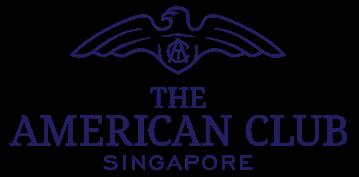






AAS paid members enjoy discounts at a range of local businesses. Check out our website for more details.
AAS members, be sure to log in to receive discount codes on the “Your AAS Membership Card” page.





















AAS Running Club
Sept 8, 9:30 – 11:00 AM
Pickleball Open Play + Beginners Coaching
Sept 14, 2:00 – 3:30 PM
The Thirsty Eagles
Sep 19, 7:00 – 9:00 PM
Volunteer at ACRES
Sept 21, 10:00 AM – 1:00 PM
Freelancers, Entrepreneurs and Small Business Owners Coffee
Sept 25, 10:00 AM – 12:00 PM
AAS Presents Fall Fest
Oct 6, 4:00 – 7:00 PM
Haunted Boozy Bus Ride to Halloween Horror Nights
Oct 12, 6:00 PM
AAS Flag Football
Nov 16
Save the Dates:
Shoeboxes for Sailors – Nov 17
Thanksgiving Feast – Nov 24
Toys for Tots – Dec 2
George Washington Ball – Feb 15







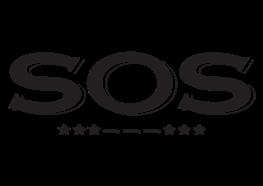



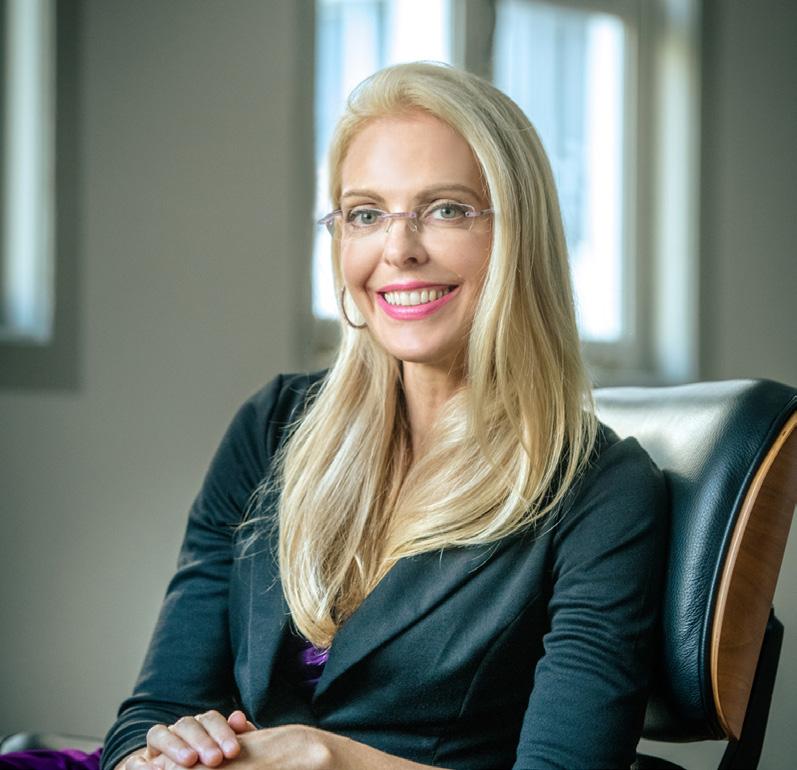
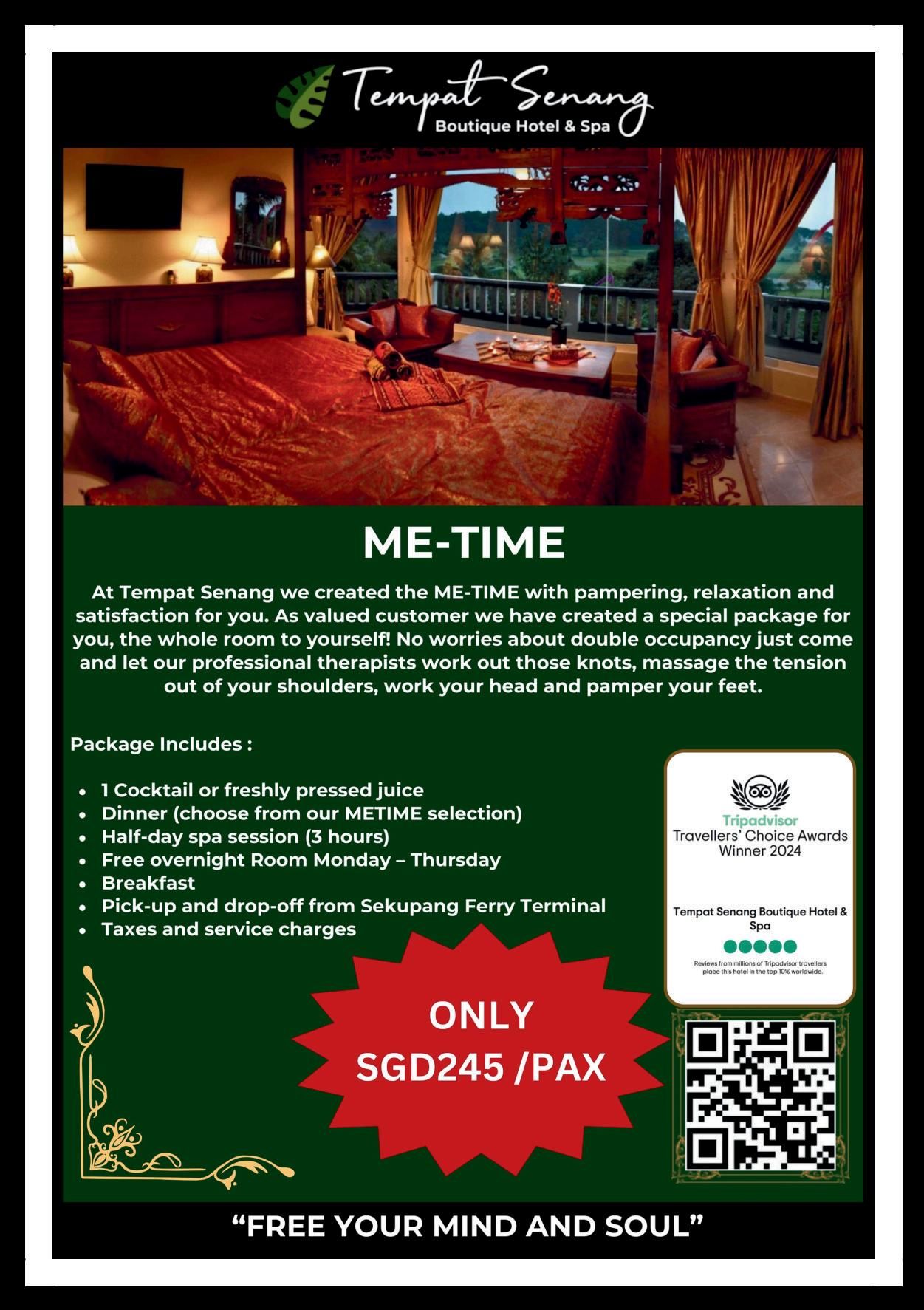
Tammy M. Fontana, MS (USA) NCC CTRT, clinical Sex Therapist (USA)

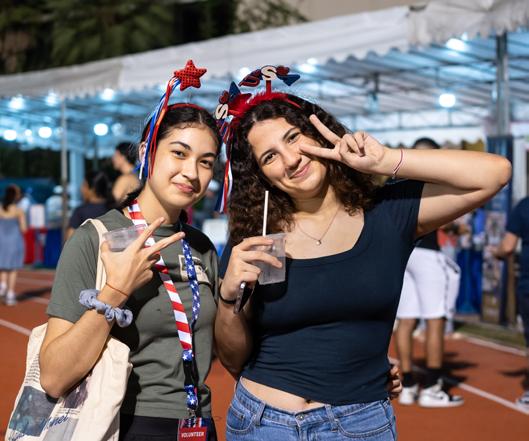



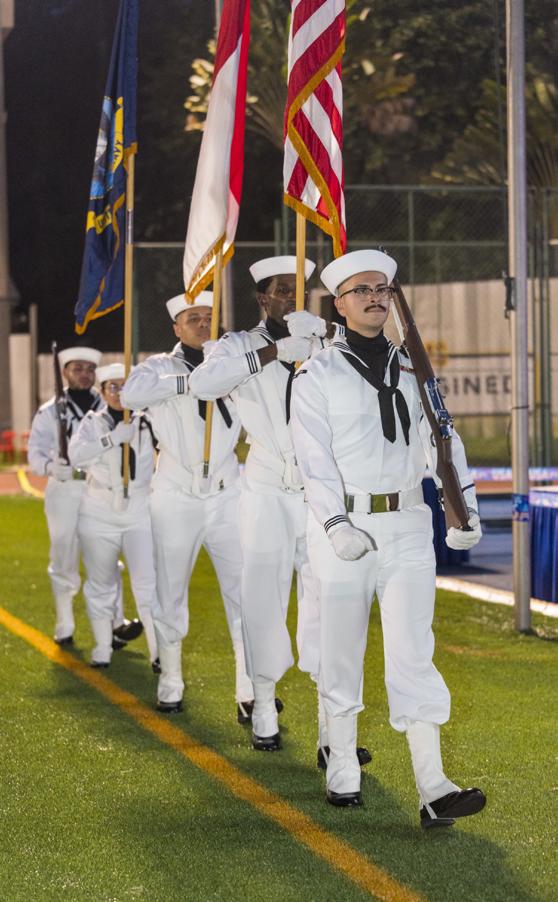




Thank you one and all for making our annual Fourth of July Celebration a night to remember! It made our hearts sing to see so many enjoying the food, drinks, games, contests, music and the marketplace! Wow, what a party!









Congratulations to all of our contest winners and a big thank you to those who participated! Our watermelon eaters enjoyed every bite of this delicious fruit sponsored by Little Farms. The pie bakers wowed our judges with their amazing recipes! And, we loved seeing everyone decked out in their red, white and blue themed outfits!
We'd like to say a huge thank you to our pie judges and watermelon contest runners!
It was truly wonderful to be back on the campus of Singapore American School. We are so grateful for the school's support and the support of our other sponsors and prize donors, as well. And a huge thank you to the army of volunteers who helped pull off the event. We couldn't do it without all of you! We love how our long-time members and American sister orgs like the American Dragons, AWA, and The Navy League always show up to help!
For more photos of the event, click here
Medical Support
Membership Drive Sponsor

Logistics Partner



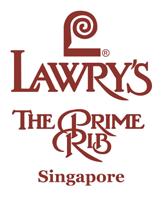




Craft Corner Sponsor

Watermelon Eating Contest
Age 4 and under
Jackson Shifrin
Age 5-9
Ryan Mullinix
Age 10-15
Henry Ullman
Age 16+
Mark Gupilan
Adult Wheel Lucky Draw
Sophia Archulera
Kid Wheel Lucky Draw
Nellie Baggett
The Great American Pie Bakeoff
Helen Noble Family, Apple Pie
Best Dressed Group
Mika Burns Family
Best Dressed Individual
Helen Troncoso

Game Sponsor

Drone Booth Sponsor

Prize Sponsors











Watermelon Sponsor

Video Booth Sponsor











By Vaughan Graff, Troop 10B
This summer, a group of Scouts from Singapore attended an international camp in Mongolia. The camp offered a mix of challenging activities and cultural immersion. Set against Mongolia’s vast steppes and clear skies, the camp provided an ideal environment for the Scouts to learn new skills and experience a different way of life.
One of the primary activities at the camp was earning the Archery and Horsemanship merit badges. In the archery sessions, Scouts learned to improve their aim and technique under the guidance of professional instructors with incredible skill. Many struggled initially, including myself, but with practice, we grew more confident and skilled, consistently hitting the targets by the end of the camp. Horsemanship was equally memorable. Scouts learned the basics of horsemanship, from saddling horses to riding them across the plains to learning the vast knowledge needed to properly care for a horse, like illness and proper routines. Despite initial nerves, Scouts quickly adapted and even learned to trot, gaining a deeper appreciation for these powerful animals and the culture that values them.
A highlight of the camp was the Naadam Festival, a traditional Mongolian event showcasing wrestling, horse racing, and archery. The Scouts observed these events, gaining insight into Mongolia’s rich cultural traditions. Wrestling
matches, with competitors dressed in traditional attire, demonstrated strength and technique; we could watch and learn the rules for this proud national sport and compete against the wrestlers and fellow Scouts. The horse racing event, featuring young riders racing at high speeds across the fields, highlighted Mongolia’s deep connection to horses. The archery competition further deepened the Scouts' understanding of the sport they had been practicing. These events and performances of traditional Mongolian music and dance provided the Scouts with a well-rounded cultural experience.
The camp was well-organized, providing clean water, and the food, though well-prepared, differed from what they were used to at home, requiring some adjustment. However, these challenges were minor and added to the authenticity of the experience, making it feel more adventurous. Us Scouts encountered a few minor challenges in Mongolia, one being the unpredictable weather, with sudden changes from warm sunshine to cold rain. Still, it was all worth it to have the opportunities for fast merit badge and rank advancement and an enriching and enjoyable experience over our summer break.


The summer camp in Mongolia provided the Scouts from Singapore with an invaluable opportunity to develop new skills, forge international friendships, and gain a deeper appreciation for different cultures. The lessons learned and the memories created during this camp will undoubtedly stay with them for years, highlighting the lasting benefits of international Scouting experiences.
































By Gian S., USAGSO Singapore Troop 83








The WAGGGS (World Association of Girl Guides and Girl Scouts) Chalet in Switzerland offers a truly unique camping experience, blending the beauty of the Swiss Alps with the rich tradition of global scouting. Located in the picturesque village of Adelboden, the Chalet is more than just a camp; it’s a center of international friendship, leadership, and adventure.
As a seventeen-year-old traveling with her sister for the first time away from her parents, arriving at camp was a nerve-wracking experience. I’d never been to Europe before, let alone a place below 15 degrees Celsius in the summertime.


My sister and I were greeted warmly by the lovely staff and USAGSO camp council members. They helped us settle in comfortably, and we got to know many other campers quickly.


Upon arrival, I was immediately struck by the breathtaking scenery. The Chalet is nestled in a valley surrounded by towering mountains, providing a serene and inspiring backdrop for any camp activity. The air is crisp and fresh, and the sounds of nature are ever-present, creating an immersive outdoor experience that feels peaceful and invigorating.


One of the standout aspects of the WAGGGS Chalet is its emphasis on global connection. Campers come from all over the world, bringing diverse cultures, languages, and experiences to the table. This creates a vibrant, multicultural atmosphere that is both educational and enjoyable. I made many friends from Germany, China, the United States, and many other countries. Whether it’s sharing stories around a campfire, hiking for hours along the Swiss Alps, or working together on group challenges, the opportunity to connect with Girl Guides and Scouts from different countries was my favorite part of the camp.








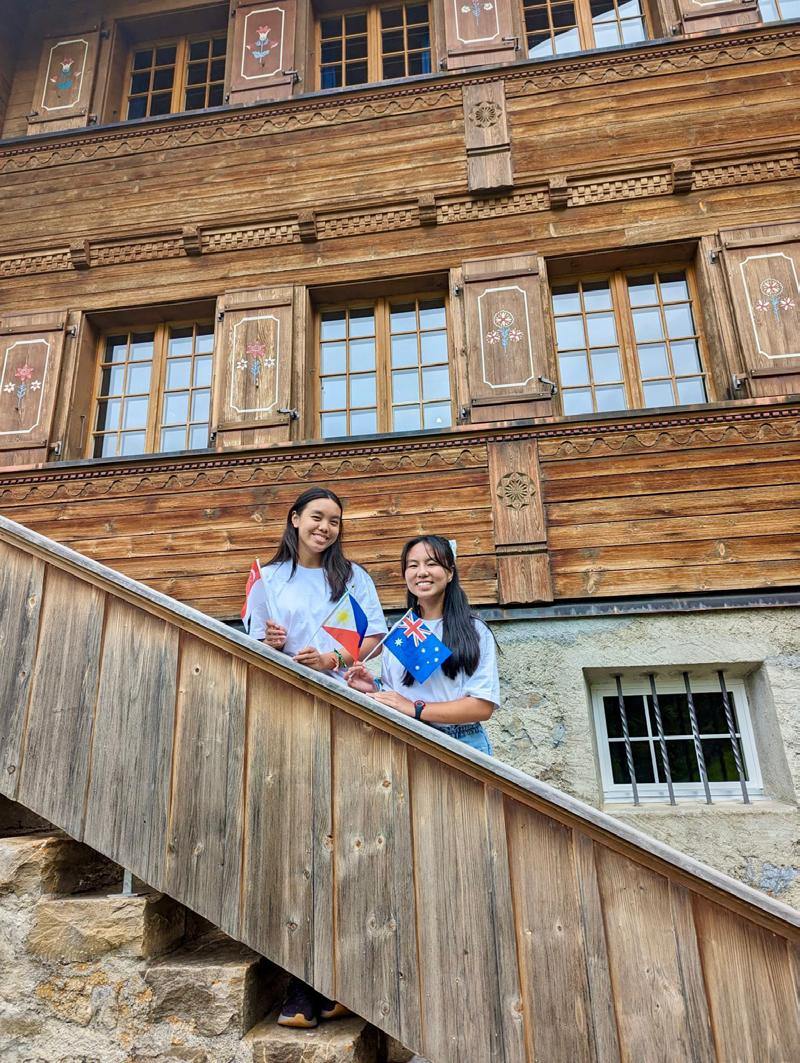


The activities offered are varied and cater to a wide range of interests. From hiking in the stunning mountains to engaging in arts and crafts, there’s something for everyone. The guided hikes, in particular, were my favorite as they allowed me to take beautiful photos of the unforgettable scenery, make new memories with my new friends, and fall in love with hiking in the cold.
Accommodations at the Chalet were cozy, with a rustic charm that complements the natural surroundings. Staying with eight other girls in the same
attic with nothing but mattresses, blankets, and pillows created an intimate environment that helped us bond quickly and form close friendships. The rooms were warm, and the communal spaces were welcoming, fostering a strong sense of community among the campers. The staff at the Chalet are friendly, knowledgeable, and always ready to help, whether it’s guiding a hike or facilitating a group discussion.
Overall, the WAGGGS Chalet in Switzerland is more than just a camp—it’s a life-changing experience. It offers the perfect blend of adventure, education, and global friendship, all set against the backdrop of one of the most beautiful landscapes in the world. Whether you’re a seasoned Girl Guide or Scout or new to the movement, this camp will leave a lasting impression.






By Olivia Go, BSA Troop 1010G
Recently, members of Scout Troops 10B and 1010G traveled to Mongolia, where we camped alongside other troops from all around the world. This camp allowed us to interact with people from different countries and cultures while also showing Scout spirit and earning many different merit badges.
Camp Mongolia provided me and my troop with a whole new camping experience. For example, the weather in Mongolia was very different from the weather in Singapore. Though it did rain, the nights were much colder than we were used to, although the days were similar. This abrupt temperature change led to many people running to grab their jackets. The rain also imprisoned everyone inside and flooded several people’s tents, making me very grateful that mine was set up right (mostly). Nonetheless, I am very grateful for my warm sleeping bag and my rain poncho.
I found that the merit badge classes I participated in were beneficial in efficiently earning a merit badge. The teachers went over the different requirements in a way that was

easy to understand and complete. I learned a lot of facts and skills that will help me in my Scouting future, and I heard many stories about various emergencies, camping trips gone wrong, and mean classmates. In addition, the Wolf Pack activities ensured other opportunities to learn new skills, even if you weren’t taking that class. Some activities included Knot Tying, Horsemanship, and Archery. I really enjoyed the Wolf Pack because it helped me expand

my knowledge about science, knots, horses, Scouting heritage, and more. The camp atmosphere in Camp Mongolia helped unite troops and form friendships. Each morning, the Youth Staff would do fun activities such as Extreme Sports and allow troops to add cute items to a magic water bottle named Marico. This was a particular enjoyment, and Troop 1010 got to add a little crocheted hat made by Talia. These morning activities not only woke people up but also made them laugh. The meals also helped draw people together; seating was assigned, and you didn’t always end up with your troop. This allowed Scouts to talk with people they didn’t know over the meal table and form connections that wouldn’t break despite the miles between their homes.
Overall, Camp Mongolia was an amazing opportunity for which I am very grateful. I made new friends, learned new skills, and earned merit badges that pushed me one step closer to becoming an Eagle Scout. Many lasting memories were made at Camp Mongolia, and many will be made at future camps.



























By Thomas Reeb, BSA Troop 7












On June 29, I spent the evening and night at the Singapore American School as a Boy Scout during the American Association Singapore’s Fourth of July event. My main job was to meet and guide the US Ambassador to Singapore, Jonathan Kaplan. My day started with the ambassador's bodyguard texting me and asking where to drop him off. I gave him directions on where to meet. I was hoping for a day filled with fireworks and completing my volunteer hours, but it turned out to be a bit different.


foods. I ate some organic green vegetables, and the ambassador also tried them. I also drank a vegan drink, but my favorite food was tater tots. At the end of the ambassador's visit, Ayla and I asked about the leftover tickets, and his friend gave them to us, which was really cool.


I arrived early at SAS and was excited about the event. I was there mainly to celebrate the Fourth of July, expecting fireworks. When I found out there wouldn’t be any, I was a little surprised, but the night was still good, with a flickering light show.
The ambassador arrived with a friend. I was at the designated spot to meet with him and a Girl Scout, Ayla Bower. We walked with him and AAS President Ashok Lalwani. The ambassador checked out the games while I helped him out by carrying his speech. After the ambassador went up to the podium and gave a speech to celebrate the 4th of July, we went to get something to eat and drink.


I played games at the event, and the best was ax throwing with my friend Leo. We ended up with a bag full of stuff. While the ambassador didn’t play any games while I was with him, I did get to cut any line I wanted because I was helping him out. That was one of my instructions, and it felt pretty special.
The experience felt a bit socially awkward, but it helped me learn how to deal with different situations, which was a new experience for me. If I had to do it again, I’d get more photos with the ambassador next time. Overall, it was a day full of surprises, and I learned a lot while having fun representing Boy Scouts.


There were many food choices, and I was proud of myself for trying new














From exploring their creative side through artistic expression to diving deeper into mathematics with engaging learning games, every experience helps build a lifelong love of learning in our students. Learn more about our globally-recognised curricula and student experience today.
Book a School Tour

Future-ready education tailored to prepare students for an ever-evolving world. Kindness-led learning approach that creates a safe, healthy and Diversity celebrated with a 30% cap on any single nationality among the








The smell of incense wafts through the air, and Navitha’s feet can be heard echoing through the halls of the temple. It’s Deepavali, and she’s racing to catch the decoration of the cows known as gow pooja. She bursts through the stone doors of the temple and is greeted by the sun’s warmth on her skin and the fresh country air of Karnataka, India.
She arrives just in time as villagers paint the horns and hooves of a cow bright red – a symbol of good luck and prosperity. The body has already been painted with an intricate design of a peacock, the stunning color contrasting with the dark skin of the animal. As she is examining the designs, the village aiji (auntie) brushes past her to drape a garland made of marigolds, roses, and jasmine on the nape of the cow. She turns to Navitha, “We do this to show respect and reverence for these sacred animals.”
After gow pooja, Navitha hurries to the temple for an oil bath. This tradition passed down from generations symbolizes cleansing the body and mind. Sesame oil is massaged into her body and rinsed off with warm water. Once completed, she gingerly gets into her new bright green saree, which is adorned with embroidered floral patterns and gold sequins. Navitha sniffs the air as she gets dressed and sprints off the moment her saree is tied.
Navitha Meethala Consular Cashier
“Idli time!” she thinks, bolting to the kitchen. During Deepavali, families eat a combination of idli, a savory rice cake, with chutney and curry for breakfast. The feasting never stops. Throughout the day, Navitha visits extended family members and other villagers, stopping to eat sweets coated in palm sugar, payasum, and an array of vegetarian platters.

At night, the wheeze and pop of fireworks fill the sky. A chain reaction is set off from one house to the next as a parade of children sprint from house to house to catch a glimpse of the fireworks spectacle. As the last firework goes up, the children head home, and Navitha returns to the temple to rest.
The alarm rings, and Navitha is transported back to the present. That was 33 years ago, and she no longer lives in Karnataka, in the temple that her grandfather built in the 1920s. She now resides with her husband and two children in Singapore, a bustling metropolis.
Deepavali is vastly different now that she no longer stays in the same country as her parents. Instead, Navitha celebrates it with her best friend’s family. The morning starts with prayers of blessing – a tranquil moment before the chaos descends. The ladies then start preparing various dishes while the rest of the family changes into their beautiful sarees and kurtas. Soon, the family is out of the door, on their way to visit close friends.
While moving from the village to a metropolis has been stark, Navitha opines that she has found peace through her spirituality, which helps her stay grounded. Her work at the Embassy has also given her a sense of purpose and contentment. Her innate ability to understand people and empathize has paved the way for her as a Consular Cashier. Through her job, she interacts with individuals from all walks of life and hears their stories.

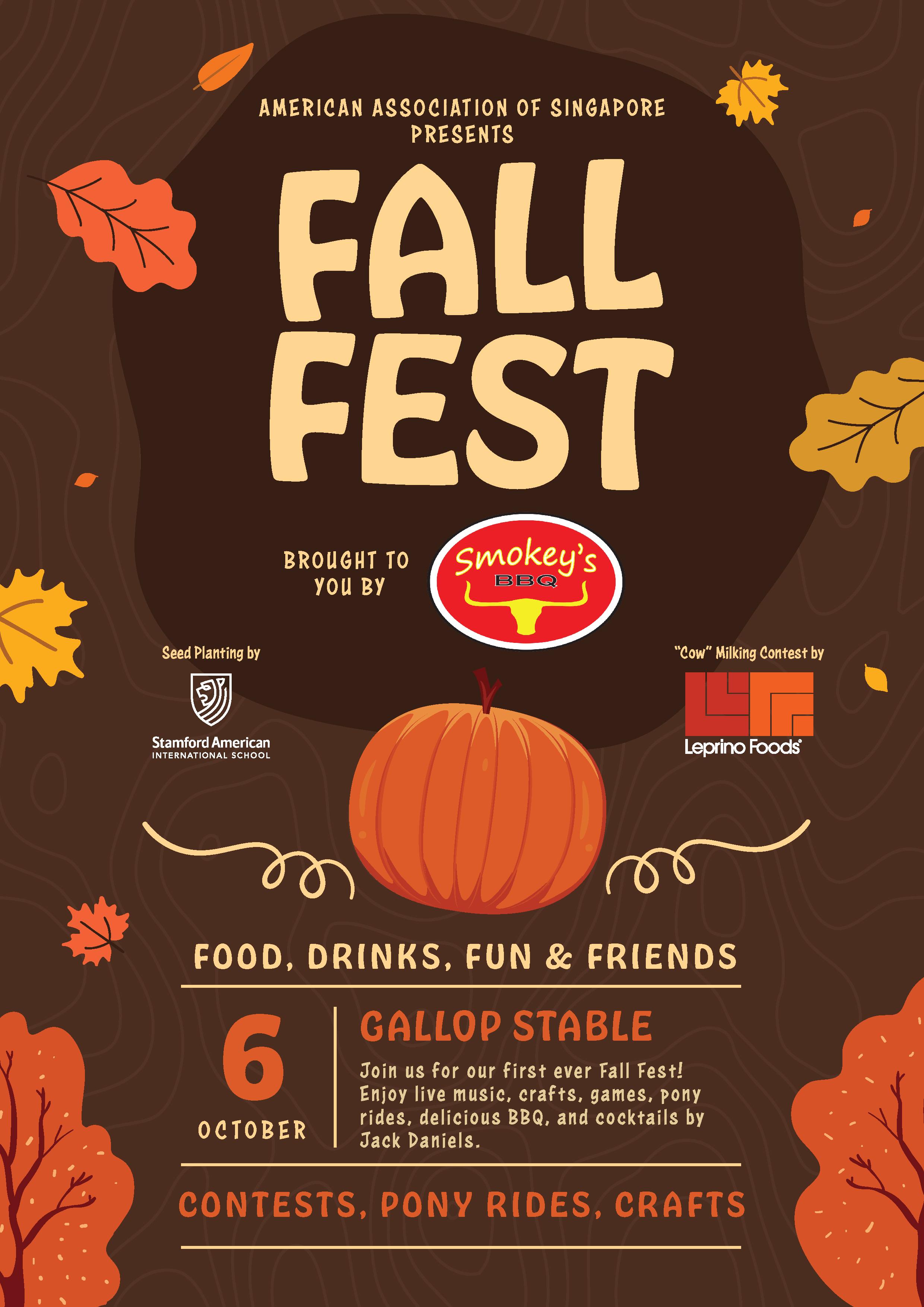
By Andrea McKenna Brankin
More and more medical professionals, as well as teachers, social services, and even corporations, are making taking care of mental health more of a priority than ever before. As someone who suffered at work due to my struggle with Bipolar Disorder, which was looked down upon by my bosses, I couldn’t be happier to see this! However, one of the best parts of this is the support of the tech industry, which has risen to the task of meeting these mental health needs, particularly in tracking mental health moods.
For this column, I wanted to share a few tech devices, from actual devices to phone apps, that I have used for my mental health.
BRAIN ZAPPER
Fisher-Wallace is a company that had one of the first FDA approvals for a brain stimulation device used for depression, anxiety, insomnia, and other neuropsychiatric and cognitive disorders. I started using this device about 12 years ago with the approval of my psychiatrist (a medical doctor).

It’s a little scary to look at, as the early versions had sponges that you soaked and then applied to your temples with a headband. Today, they are more slick. But it worked nicely for me and gave me a good routine to help my symptoms. It calmed me down. And any time you can have a routine, it’s good for your mental health.
The technology works like this, from their website research lab:
“Noninvasive brain stimulation (NIBS) is a collection of techniques that stimulate or alter brain activity from outside of the body that includes clinic-based treatments such as transcranial magnetic stimulation (TMS) and electroconvulsive therapy. Transcranial alternating current stimulation (tACS) is a form of wearable brain stimulation that delivers a low-intensity, pulsed, alternating current via scalp electrodes so that current passes through the skull to modulate neural activity.”
MEDITATION BRAIN READER
One of the first devices I used was to help me with mediation. It’s called Muse, and it actually reads your brainwaves to see what mediation state you are in. It’s really cool! Basically, you connect the temple headband to your phone, and birds chirp when you are in the highest meditation state. It tracks how many times you hit that meditation state in each session. If you’re goal-oriented, you might like to try this one.

I recently bought a hand-held device called the Spring Sleeping Instrument It pumps out a low-frequency electric pulse that can help with sleep and anxiety and even has a higherfrequency setting that helps you perk up. I’ve tried it more for sleep, which I
have trouble with because my Bipolar mind does not calm down very well. Harvard agrees that sleep is a bigger problem for many people.
According to Harvard Medical School, “up to a third of all adults — including 30% to 48% of older people — have a hard time falling or staying asleep at some point, with about 10% developing chronic insomnia. So, it’s not surprising that a wide array of gadgets claim to help you get more Z’s.”
Phone apps unquestionably come to the rescue for the lowest-cost and easiest devices to use for tracking and supporting mental health. I use the Apple Watch, which asks me about my mental state twice a day, once for how I feel at the moment and once at the end of the day to record how my day was. You can see the charts for this; I find them very helpful. Many other apps track, which you can find in your App Store for whatever phone you have, including Daily Bean, Emmo, Daylio, Moodistory, and many more. Take a look and see what you can find to fit your needs.
I hope that if you have mental health issues, even temporary ones due to stress, grief, job loss, or other challenges, you will give one of these items and apps a shot. You will find that you can track your moods so well that you can not only share them with your health professionals but also help yourself predict and prepare for downturns. This is the heart of managing mental health.
People often say they are “so sorry” that I have to deal with Bipolar Disorder. I tell them that now is the best time to be living with mental health issues because of all the tech out there to choose from. There is support, there are answers, and there are now more solutions than ever.


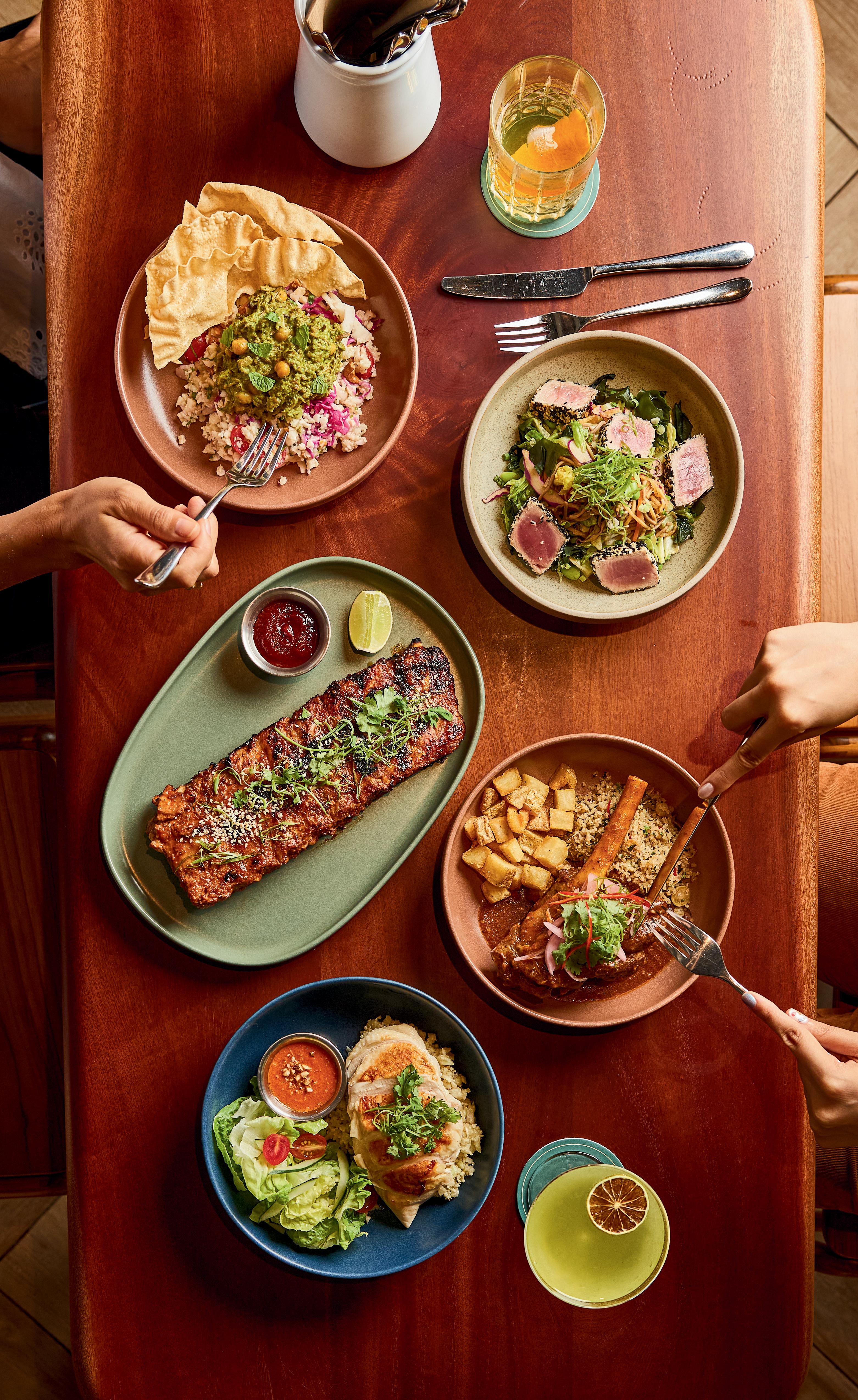


By Kinjal Shah
Some go in with fear and trepidation, and some are ready to face the challenge head-on—and sometimes, one comes out with a book to his name!
Singapore’s National Service (NS) is a mandatory conscription system for all male citizens and secondgeneration permanent residents. Established in 1967, NS requires eligible individuals to serve in the Singapore Armed Forces, Singapore Police Force, or Singapore Civil Defence Force for two years. After completing their full-time service obligation, conscripts are placed in the reserve forces and must undergo periodic training and mobilization until they reach their mid-40s to early 50s. The aims of NS include ensuring the country's security, fostering national unity, and instilling discipline and resilience among its citizens.
After enlisting, Max West (class of 2017) quickly realized his NS experience would be unforgettable. Scribbling notes daily, writing furiously before lights out (and sometimes after), he knew he wanted to share his journey. What began as a

personal journal evolved into a book, capturing memories to last a lifetime.
In June 2017, nearly four years after West first put pen to paper, Marshall Cavendish published How To Forge A Frogman: A Recruit’s Account of Basic Training in Singapore’s Naval Diving Unit . The book was the first of its kind in Singapore and became a Kinokuniya Nonfiction Bestseller. It is a memoir of West’s first nine weeks in NS during Basic Military Training in the Naval Diving Unit (NDU). It proceeds in a day-by-day journal format, detailing his life as a recruit, from the tough training to the lighthearted moments and new friendships. Before being published, the book was reviewed by the NDU, Singapore Navy, and Ministry of Defence, which together took 18 months to offer their seal of approval. The only changes West had to make were to the names of regular service members and removing some of the most offensive language. But hey, as we all know, people in the Navy do not swear!
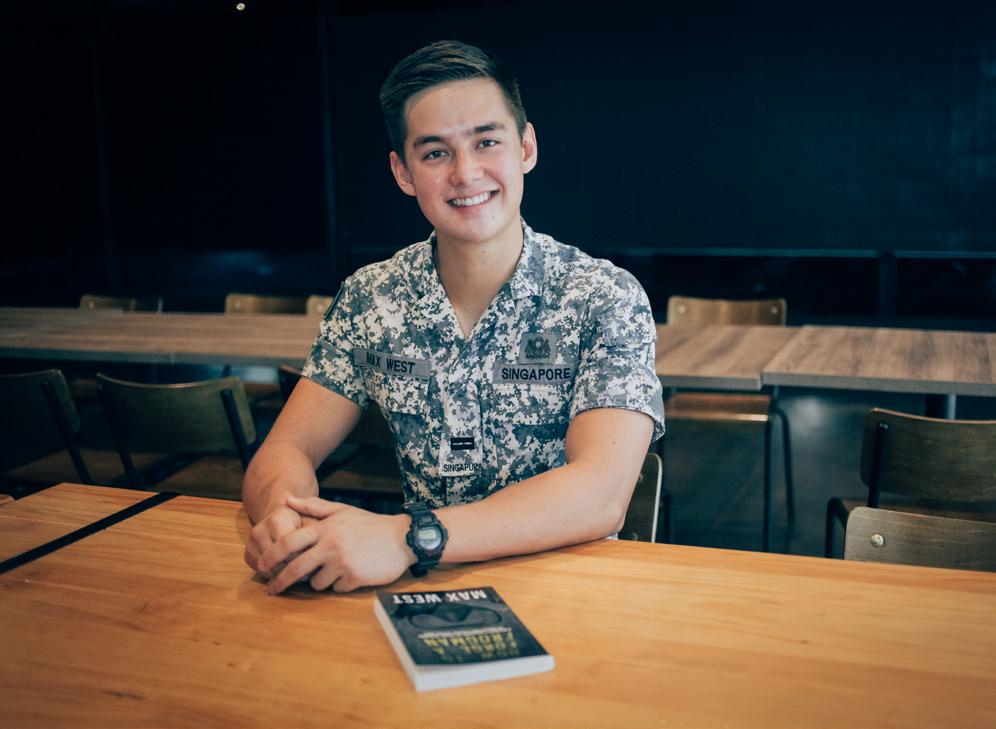
For others, the journey begins with a mix of apprehension and resolve. Yash Talekar (class of 2019) recalls the initial excitement. “Enrolling in NS as a duty-bound Singaporean citizen was daunting. You never fully know what to expect,” he shares. The
uncertainty of what lay ahead was a common sentiment, echoed by Zahin Hasan (class of 2020). Hasan initially felt dread and fear, a stark contrast to the excitement his peers felt heading off to university. Despite the collective nature of NS, the experience is often solitary. This was true for both Hasan and Telekar. Hasan was the lone Singapore American School (SAS) enlistee in the Police Force from his class. Yet this solitude helped him develop self-reliance, independence, and resilience. Talekar found himself alone in his platoon, isolated from fellow SAS alums, and yet went in equipped with some great advice from past SAS enlistees. After being posted to the Navy as a shipborne specialist, Talekar was excited to take on this challenge and navigate this new world.
Christopher Hussey (class of 2008) describes his initial weeks in NS as a test of endurance. "I was homesick and cried constantly," he confesses. "Mentally, nothing can prepare you for NS." The regimented lifestyle is a stark contrast to the freedom enjoyed at SAS, but it’s in these moments of struggle that our enlisted Eagles find new strength. West, in the elite NDU, redefined his conceptions of toughness and resilience and pushed himself to limits he never thought possible. "We are all capable of doing far more than we think we are," he says, reflecting on the physical and mental challenges he faced.
Completing NS is a shared experience that builds a deep connection to Singapore, especially for SAS alumni. It is a journey of growth, resilience,
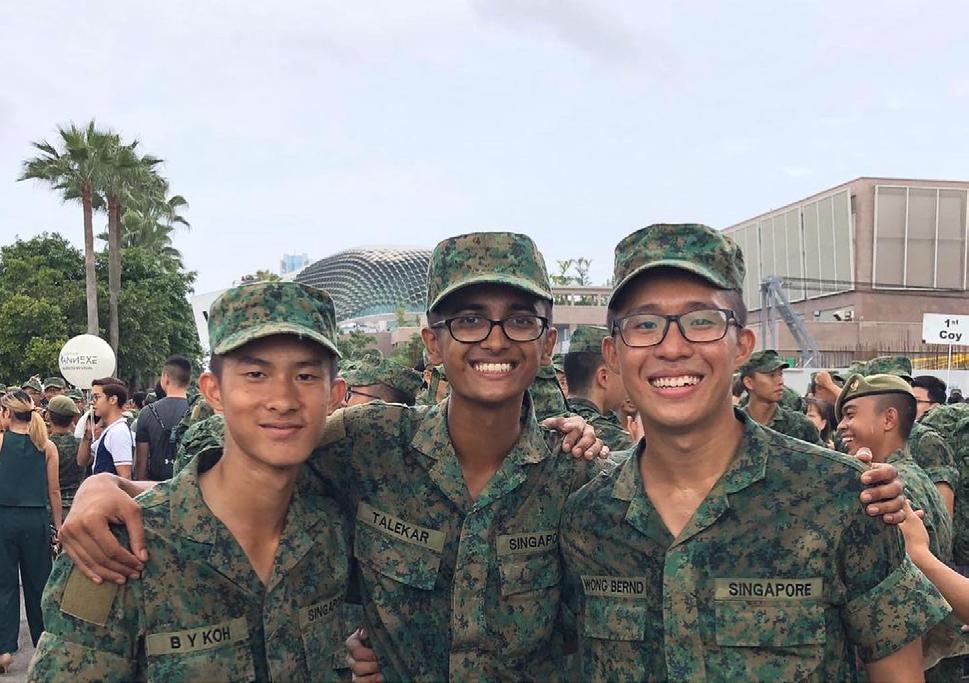
and discovery. From forging unbreakable friendships to gaining new perspectives, NS leaves a lasting impact. The bonds, lessons, and memories are unique. Whether in the Army, Navy, Air Force, Police Force, or Civil Defense Force, every SAS NS story reflects the strength and spirit of our alumni, bridging their international backgrounds with the shared bonds of service to Singapore.
Despite the challenges, camaraderie forms the backbone of their NS experience. Talekar fondly remembers the times spent off-shift, building connections with his fellow Naval trainees. "We would eat, play games, and that's where I made some of my closest friends," he shares. These bonds remain strong long after their service ends.
Going through NS has left an indelible mark on these SAS alumni. Hussey found purpose and focus
through his service. "Leading my platoon in the National Day Parade was unforgettable," he says. The experience of commanding and earning his peers' respect profoundly influenced his leadership approach. Talekar speaks of newfound adaptability and leadership skills, qualities that serve him well as he navigates his studies in aeronautical engineering at Imperial College London. Hasan embraced a unique lens through which to view Singapore and its people. "Serving in the Police Force enabled me to see the human condition from a different perspective," he reflects. This broadened understanding of society shapes his aspirations as he pursues a career in finance.
The journey through NS is transformative for many reasons. It tests limits, forges lifelong bonds, and shapes character in profound ways. From initial dread to ultimate triumph, these experiences continue to guide and inspire our alumni, proving that their challenges were not in vain.

• Physical fitness: Start training early. Running and strength exercises are crucial.
• Mental resilience: Adopt an "it is what it is" attitude. Understand that millions before you have successfully completed NS.
• Traveling light: On enlistment day, pack light. It makes the transition into NS easier.
• Embracing the experience: Be open to the journey. This mindset will help you cope better and find meaning in the challenges.
• Seeking help: Don't hesitate to ask for mental support. Homesickness and stress are common, and talking about it can make a big difference.
If National Service were not mandatory, I wouldn't dismiss the idea of enlisting. Given my experiences, I might still choose to join. Serving in the Police Force helped me grow as an individual and provided unique experiences that broadened my perspective on the world and my role in it.—Zahin Hasan (class of 2020)
I would still choose to do National Service even if it weren't mandatory, though this decision comes from reflecting on my experiences after completing it.—Yash Talekar (class of 2019)
On some days, I am grateful for who I am and where I am now, none of which would’ve been possible without the army. On the other hand, I still struggle with the “what if” scenario of not having done NS. I just don’t know if I’ll ever know. It is what it is!—Chris Hussey (class of 2008)


By Melinda Murphy
Yes, you can vote in the US Elections if you live in Singapore! In fact, you should vote. The 2022 elections in both Arizona and Georgia came down to absentee ballots, so your one vote may be the vote that matters. Sadly, out of the 2.8 million overseas citizens eligible to vote, only 3.4% voted in 2022, according to a Federal study, whereas in the US, about two-thirds of eligible voters vote.
But how do you get started? The one thing you need to know is this link: FVAP.gov. It is the key to everything. There is also VoteFromAbroad.org. No matter which state you vote in, you can register via these two websites, and your questions can be answered here.
But don't delay. You need to do everything ASAP. Things take much longer overseas than back in the States, and each state has different requirements.
You actually need to register every year, as in some states, registration expires. A good rule of thumb is to do this every January. But at the latest, submit by mid-September so you can vote in the federal election in November.
If you request your ballot through FVAP.gov, your vote is protected by the Uniformed and Overseas Citizens Absentee Voting Act (UOCAVA).
When you visit FVAP.gov, the first thing you need to do is register and request your absentee ballot with the Federal Post Card Application (FPCA). You can fill out the form online or print it out and fill it out by hand.
But here is the key: the form must have a wet signature, so even if you fill it out online, you absolutely must print it out, sign it, and then upload it to submit. Your form will be forwarded to your state, and you should receive a ballot within 45 days.
There are boxes at the start of the form.
• Member of the Uniformed Services or Merchant Marine on active duty
• Spouse or dependent of a member of the Uniformed Services or Merchant Marine on active duty
• US citizen living outside the country, and I intend to return
• US citizen living outside the country, and my intent to return is uncertain
• US citizen living outside the country, and I have never lived in the US
So what's the difference between "I intend to return" and "My intent to return is uncertain?" Checking that you intend to return could affect the taxes you pay. So be sure to ask your tax accountant which box you should tick.
There are three federal positions: President, Senator, and House of Representatives. Your ballot for these three will be sent either way.
No, you don't have to declare a political party, but if you don't, you won't be able to vote in the primaries where a party must be declared.
WHAT HAPPENS IF MY BALLOT DOESN'T ARRIVE?
If you have not received your ballot within 45 days, go back to FVAP.gov and vote using the Federal Write-In Absentee Ballot (FWAB). If your other ballot arrives, you should also fill it out. Your state will destroy the older ballot when the new one arrives. You can even vote now, change your mind, and send in a new ballot later. The latest ballot will be the one counted on Election Day and will not be counted twice.
You need to check with your local election officials in your home state to confirm they have received both the ballot request and the actual ballot. This is on you. Local election officials are generally helpful if you email or call them. Some states also have online portals where you can check. Typically,
the states receive the info, but now and then, something goes astray. That's why you want to register early - in case they need to fix something.
So, where are you supposed to vote? That's easy. You vote in the last state where you lived in the US. So even if you own property in five states, you vote in the last place you lived and only vote once. What about kids? Well, if they were born in the US and lived there even just one day, that's where they should register. But if they have never lived in the US, they should register in the state where their parents last lived.
It's key to check your state's requirements on FVAP.gov, as each state has different deadlines and voting methods. Some accept email ballots, some need hard copies mailed, And some want faxes (for this, you can use an e-fax service). The deadlines are quite varied, so be sure to check. Also, states may require certain IDs, like state driver's licenses or passports. When you fill out the form on FVAP.gov, the information required by your state is automatically populated.
There are different ways to send your ballot. First, you can drop off your ballot at the US Embassy here in Singapore, but you should know that the pouch takes 3-5 weeks to arrive in Dulles, Virginia, and then the ballot must go to your state. So, this only works if you are voting early. You can also mail your ballot from the Singapore post office, but you'll need to pay for postage to your state. A private courier is the way to go if you are running behind and voting close to the election.
Your return address is key. You must put your Singapore address as the return address. If you put a US address on the envelope, you won't be seen as an overseas voter, and your vote will be tossed. This also means that your voting address (US-based) and residential address (Singapore-based) should be different. It's also better to be mailed from overseas than dropped off by a relative in the States.

Several non-partisan voter registration events will be held in Singapore over the next few months. The American Association will collate the information and share it as it is announced.
This article is just the tip of the iceberg. If you have more questions, FVAP.gov has a great FAQ section with all the answers.
The most important thing you should take away from this article is that you must register to vote as soon as possible and send in your ballot soon.
How has technology improved life in one of Asia’s most digitally connected cities?
By Aimee, @littleluxurylist

I’ve lived in Singapore for more than ten years and love its digital convenience. Singapore has one of the highest mobile subscription rates in the world, at 162%, and local and international developers have embraced mobile-friendly innovations and apps. Basically, there’s an app, website, or digital advancement for almost anything!
The most significant technological innovations here include transportation, payments, meal planning, and government services.
WANT TO FIGURE OUT HOW TO GET SOMEWHERE?
Use Google Maps or Waze to estimate the amount of time it will take to arrive at your destination. They list multiple methods, from walking (least likely in this weather!) to public transportation, scooters, and cars. Speaking of public transportation, SG Next Bus gives timetables for each bus stop so you know how long you’ll be waiting, similar to listed waiting times on all
train platforms. If only there were an app to improve traffic!
Once you are about to take a bus or train, simply tap your phone, watch, or EZ-Link card. SimplyGo, by the Land Transport Authority (LTA), enables you to pay with your bank debit card or EZ-Link card. Even visitors to Singapore can use their country’s issued credit cards, too, though an S$.60 charge/ day will apply. This makes it seamless to pay for Singapore’s public transportation.
If you want to get a Grab/GoJek/ Ryde taxi, log into one of these apps and directly book. Grab is a “super app” that combines on-demand transportation services with food delivery, hyperlocal deals, courier services, and its own payment services! Grab has created its own digital ecosystem to enable easier and affordable access to everyday services. It’s amazing how a taxi app could also pay for your hawker center meal!
Even the most traditional Singaporean mainstays have innovated with SG QR - Singapore’s consolidation of private instant payment transfer options. SG QR enables customers to use their mobile phone to pay a merchant from most major banks and many private apps (e.g., Fave, GrabPay, ShopeePay). Due to its cost, private merchants, especially hawkers, had avoided having a credit card Point of Sale (POS) machine. Now, most hawkers don’t need to get a POS and will take SG QR or Paynow (bank-led near instant payment system). This also makes queues quicker as neither party has to interact with cash, and records are instantly created for each transaction.
You can order groceries from major grocery stores, like Cold Storage and Fair Price, on their own websites and apps. Online retailers like Redmart (part of the Lazada app) make buying
groceries and scheduling delivery a breeze. You can even opt for specialty options like sustainably sourced foods at Sasha’s Fine Foods and hard-to-find French food at Le Petit Depot.
If you prefer a nice prepared meal, choose on-demand food delivery from a few apps like FoodPanda or Deliveroo. Some of the restaurants on these apps are cloud kitchens, meaning they don’t have dine-in or takeaway options for diners. They serve customers only via delivery! The next level of this is social media food popups. We had biryani from an Instagram food seller, and it was great!
Singapore’s government has also leaned into digital services with a digital ID unlocking and integrating with multiple other apps. SingPass is a government-issued ID that contains your National Registration Identity Card (NRIC). It can serve as a sign-in
across 800 agencies and businesses. It can be used to check into the Immigration and Checkpoint Authority (ICA) whenever we enter Singapore or log into ActiveSG+ to check out the local gym and many other things. This seamless integration ensures that your secure identification information enables easy access to different services. It’s so great not to have to enter your information constantly!
Singapore has seen many innovations in the last few years that have made life easier and more productive. We can easily start our day by checking a bus schedule or booking a taxi with our phones. Then, we can order lunch
without carrying credit cards or cash. We can finish off the day by booking a gym pass with our digital IDs. These technological improvements have made life here seamless and efficient.






By Kay Yin

After spending almost 12 years in Shanghai and raising two little kids to pre-teens, my partner and I made a quick decision at the peak of COVID-19 to move to Singapore in the summer of 2022. For us, Singapore represents practicality and efficiency as a global financial hub, along with a willingness to attract top foreign talent and a world-class education system. Since we landed here in July 2022, my partner, who holds a Tech.Pass visa, has helped set up and now works for a newly founded financial tech start-up. At the same time, I, in recent months, also registered a new Private Limited Company to further explore the vibrant entrepreneurial scene here in the Little Red Dot. Here’s what we discovered during the process, with a focus on setting up a small to medium business or a start-up venture.
1. Private Limited Company (Pte Ltd)
° Pros: You get limited liability, it’s easier to raise funds, and the business can continue even if ownership changes.
° Cons: There are more regulations to deal with, and compliance costs can be higher.
My partner and I both set up our companies under this option, which is the most common business structure in Singapore.
2. Sole Proprietorship
° Pros: Easy to set up and manage, with complete control over the business.
° Cons: You have unlimited liability, and it can be challenging to raise capital.
3. Partnership
° Pros: You can share resources and responsibilities, and it’s pretty easy to set up.
° Cons: Joint liability and conflicts among partners are almost inevitable.
° Pros: It combines the benefits of both a partnership and a company, offering limited liability protection. Plus, it provides confidentiality and flexibility for its members.
° Cons: It involves more regulatory requirements compared to a sole proprietorship.
Once you’ve chosen a business structure that fits your needs and budget, you can move on to picking a company name, preparing the required documents, and filing for incorporation with ACRA, the authority in Singapore that handles company setup. You can hire an experienced filing agent to help you or tackle the process yourself. If you choose to do it yourself, the steps on ACRA’s website are clear and efficient.

For our family, since we arrived in Singapore under the EDB's (Economic Development Board) Tech.Pass program, we only set up our companies a few months later. Foreign entrepreneurs can apply for the following visa schemes to keep developing and growing their business ventures in Singapore.
1. EntrePass
This is Singapore’s version of a start-up visa. It’s typically valid for one year and is designed to encourage entrepreneurs to set up businesses that are either venture-backed or based on innovative technologies. Entrepreneurs are expected to submit a detailed business plan that meets specific requirements. Once approved, they can bring their families to Singapore to help grow the business.
2. Employment Pass
Choosing between an EntrePass and an Employment Pass depends on your personal situation and finances. The EntrePass is great for start-ups, especially since there’s no minimum income requirement in the early stages, but it does require more documentation and financial proof for government approval. The Employment Pass, on the other hand, is for when a Singaporebased company employs you, and it’s subject to quotas and salary levels—naturally, the higher the salary, the easier it is to get approved. To show that your company is financially
Teaming up with a good corporate service provider makes things easier and helps you navigate local regulations.
stable, you might need to prove to MOM that you have enough funds to cover all staff costs for at least one year. In our case, since my partner holds a Tech.Pass (another form of specialized EP), he has more flexibility in the timing of setting up his business while also being able to take on other projects at the same time.
3. Dependent’s Pass or LTVP with LOC (Letter of Consent) A Dependent's Pass (DP) holder who starts a business is eligible to apply for a Letter of Consent (LOC). As a DP holder, I needed a LOC to work and legally run a business in Singapore. I enlisted a registered agent to help with the process to make things quicker and smoother. I aim to grow the business and eventually switch to an Employment Pass (EP) for more flexibility

A Selection of Work Passes Available in Singapore
with residency and career opportunities. Many aspiring foreign entrepreneurs on a DP have taken this route—it’s a great way to keep your professional journey going while supporting your family financially.
While Singapore is famous for its strategic location, efficient government, strong legal framework, and low tax rates, there are other factors to consider before starting a business here. For example, the rising cost of living, the competitive market, and the limited supply of technical talent are all important to consider. In my partner’s experience, finding and keeping top-notch engineers in Singapore has been a constant challenge, so he’s had to enlist some skilled labor from abroad. It’s essential to evaluate market conditions and regulatory factors before diving into this market.
If you're setting up a new venture in Singapore as a foreign entrepreneur, here are some tips that might come in handy: First, teaming up with a good corporate service provider makes things easier and helps you navigate local regulations.
and communities can be a game-changer. They offer valuable advice, support, and potential partnership opportunities. And don’t overlook the government grants and incentives—they can give your business a solid boost during those challenging early stages.
Starting a business in Singapore as a foreigner is an exciting adventure full of opportunities. With some research, the right support, and sound advice, you can navigate the process smoothly and take full advantage of Singapore’s business scene. Whether you’re a seasoned entrepreneur or just getting started, Singapore’s welcoming atmosphere and smart advantages make it a fantastic place to launch and grow your business. For us, it’s been a journey with its ups and downs, but we’re incredibly grateful for everything Singapore has offered us, especially since we moved here during the height of COVID-19. We’ve seen firsthand how proactive and innovative Singapore is, and it’s truly become a place we’re proud to call home. We’re excited about growing our businesses and embracing new professional challenges in the years ahead.







By Tyler Wisler
The mere thought of starting a business is a big step, mentally, financially, and emotionally. Now add on the extra layer of trying to do that in a foreign country, one that is culturally vastly different from your own.
Should I do it?
How do I even prepare?
Where do I begin?
These thoughts have swirled through adventurous entrepreneurs' minds when toying with the idea and deciding whether they have the gumption to take the plunge and go for it.
As an expat abroad with big ideas, it can be daunting to think that your vision will translate into a market that is not on your home turf. We get it!
So, we asked three expats about their experiences starting businesses in this Little Red Dot and how they thrived. Here’s what they had to say:
Please introduce yourself, your business name, and what you specialize in.
I am Curt Hubbard, Director of Chartwell Associates Pte Ltd, and an American citizen. We are a fee-based financial advisory company that helps expatriates and locals in Singapore, including Americans, with all aspects of personal financial planning.
How long have you been in business in Singapore?
The company was licensed by the regulatory agency here in Singapore, the Monetary Authority of Singapore (MAS), in 2006, so we have been operational for more than 18 years. In that time, we have gained enormous experience helping expatriates from many countries and Singaporeans with their financial planning, investments, and estate planning.
What are the biggest challenges running a business in Singapore?
Singapore has been an excellent country in which to start a business. Despite that, there are challenges when doing so, as in any country. Costs are relatively high in Singapore overall, and the unemployment rate is very low, sometimes making hiring challenging. As in many countries, hiring foreigners may also be more difficult than in the past.
What advice would you have loved to have had before starting your business in Singapore?
There haven’t been any huge surprises, but Singapore has changed very rapidly over the years.
As Singapore develops and matures, rules and regulations change; you will want to be on top of those. In addition, attitudes change over time, so you will want to try to anticipate those changes and adjust accordingly.
What advice would you give to expats wanting to start a new venture here in Singapore?
Review your local and international workforce requirements carefully, and check the Ministry of Manpower (MOM) website for the requirements for international hires and salary requirements and how this will affect your cash flow forecasts. Understandably, Singapore will want you to hire Singaporeans as much as possible, and if you can show an intent to retrain local staff, your applications will be viewed more favorably.
The tax system is simple and clean by design and vastly superior to that of most other countries, including Western countries.
How does the Singaporean market differ from the West?
Particular preferences for products or services may be influenced by local culture and traditions. Still, Singapore is quite international, and the people here

are very exposed to products and services seen in the West, so differences will be a bit nuanced.
What are the advantages/disadvantages of being a foreign business owner?
The advantage that many expatriates bring is an international perspective, and Singaporeans are very open to change in general. Some customary ways of doing business in Asia may be a bit different, and that will take a little time to understand. Overall, though, Singapore is quite open to business, and rules and regulations are applied consistently, which is a huge advantage compared to other countries, regardless of whether you are a local or foreign business owner.
Any additional thoughts?
Think carefully about your competitive advantages, how they benefit the market, and how you are addressing the market differently. Also, carefully consider operational issues, including your capital, costs, and labor requirements. Singapore is quite a competitive market.

Please introduce yourself, your business name, and what you specialize in.
Ann Marie Regal, Avrio Wealth
We specialize in cross-border financial planning with a unique focus on US taxpayers. We have three Americans who hold the Certified Financial Planner™ (CFP®) designation, and one holds the Chartered Financial Analyst® (CFA®) and Chartered Alternative Investment Analyst® (CAIA®) designations. One is also an Enrolled Agent authorized by the IRS to file tax returns. We have a team with very deep US taxpayer expertise, and we are also American expats in Singapore. How long have you been in business in Singapore?
I’ve specialized in fee-based financial planning for US taxpayers since 2011 but was licensed with local advisory firms. Eventually, I realized I needed to start a company to offer my clients a more comprehensive service.
Avrio Wealth started on January 2, 2020 (two months before the world shut down!). Avrio is licensed by the Monetary Authority of Singapore (MAS) to work with Accredited Investors and is registered with the United States Securities and Exchange Commission (SEC) as a Registered Investment Advisor.
What are the biggest challenges running a business in Singapore?
There are challenges related to our business specifically and others to running a business in Singapore.
1. Our business specifically: We have two regulators who have ongoing compliance requirements. Some of the compliance overlaps, and some doesn’t, so we need to adhere to the most stringent regulator, whether it be MAS or the SEC.
Another is getting clients to pay for advice versus paying for assets under management. Our approach is unique compared to the typical wealth management company in Singapore. We start with a financial plan that clients
pay for, and then we may move to wealth management and charge a flat fee. Most investment managers require clients to let them manage money before completing a financial plan, often for free.
2. Running a business in general: In Singapore, a corporate secretary ensures that a business complies with legal requirements and maintains changes to a company’s statutory details and books, files Singapore returns, and keeps records up to date. This role doesn’t exist in the US, and we are often reminding our corporate secretary that we are a US company with US tax filing requirements, so they need to complete our records in a timely manner due to US tax filing deadlines.
Something unique to US taxpayers is the Global Intangible Low-Tax Income (GILTI). It is an additional US tax on your business income if you are profitable. It requires complex US tax reporting that we can’t complete in-house easily or efficiently.
What advice would you have loved to have had before starting your business in Singapore?
As a US taxpayer, make sure your calendar year is January 1 to December 31. We need to file IRS Form 5471 for our business, and it is much easier if the Singapore company’s financial year is the same as the US financial year.
Capitalize the company with a personal loan that pays you interest versus simply contributing the capital. Once the company is profitable, you can withdraw your initial funds.
Be prepared for high US tax preparation fees!
What advice would you give to expats wanting to start a new venture here in Singapore?
Follow your dreams, and don’t be afraid to fail. Even if you fail, you have learned. Be prepared to work hard! Your 9-5 and weekends may have just disappeared, but you have gained control over your future and journey.

Keep perfect books and records. Use accounting software such as Xero and work with a consultant to correctly set up your income and expense categories. It all starts at the beginning.
In a multi-passport family, there may be ways to structure the company to be more tax-efficient and ease US tax compliance.
Make sure you have professional insurance in place.
How does the Singaporean market differ from the West?
If we were in the US, we’d set up the company in a city and generally have a similar clientele or a niche – those whose incomes are in a similar range or niches, such as retirees, doctors, farmers, etc.
In Singapore, no two clients are the same. Our clients have multiple passports, have lived globally, and do not think locally. They often do not know where they want to live when they are old and gray, but they have a general idea of a lifestyle.
What are the advantages/disadvantages of being a foreign business owner?
On the upside, we are more engaging, interesting, and problem-solving. We are constantly learning and growing ourselves to keep up with multi-jurisdictional financial topics and regulations.
On the downside, it is more timeconsuming due to the complexities of running a cross-border financial advisory firm vs. being only in the US.
Any additional thoughts?
As fiduciaries, we provide objective advice that prioritizes our clients’ interests over our own. We maintain transparency by charging flat fees for our services, which is our differentiator from most wealth management and financial advisory services in Singapore.
Find a niche, start a company, and stand out from the crowd!
Please introduce yourself, your business name, and what you specialize in. Hi, my name is Andy Kennard. I'm the founder and CEO of AV Intelligence, and we specialize in providing everything you could want for listening to music or watching any kind of video content. Our customer scenarios include hi-fi, home theatre, karaoke, and background sound for condos and houses, as well as audiovisual solutions for bars and restaurants, nightclubs, offices, retail, schools, and more.
How long have you been in business in Singapore?
We started operating in 2010.
What are the biggest challenges running a business in Singapore?
Finding and keeping good staff is the number one challenge, as any business is only as good as its people. I'm grateful to my fabulous team!
What advice would you have loved to have had before starting your business in Singapore?
Think less about WHAT you will do or HOW you will do it and more about WHO will do it.
Choose your landlord and negotiate the lease terms with great care. Do not expect a partnership relationship.
What advice would you give to expats wanting to start a new venture here in Singapore?
You need to think very hard about whether you truly have the commitment and resilience to build a business and overcome the challenges that seem to bump into you daily, year after year. A wise entrepreneur once told me he had been asked to compare his role with an animal. Did he choose a lion, an ox, or an eagle? No, he chose a cockroach. “Whatever you try to do to me, you can't stop me. I'll just keep going and going!"
How does the Singaporean market differ from the West?
With the possible two exceptions of a very tight labor market and no tenant protections, Singapore can provide a very business-friendly, straightforward, and easy environment to establish and run a business. I think expats will find things familiar, not very different, and with less bureaucracy than back home.
What are the advantages/disadvantages of being a foreign business owner?
Bringing fresh perspectives due to your different experiences usually adds something valuable to the brew. The flip side of that coin is that sometimes your feelings about what to do won't work in this different environment and culture. If


you can figure out when to trust your gut and when to follow the advice of your local team or advisors instead, then you will have a good chance for success.
One specific point: there are plenty of helpful, government-backed grants, loans, and other assistance that are only available to companies with (some) local ownership.
Any additional thoughts?
In the West, we tend to be direct in our discussions and opinions - what you see is what you get. Asian cultures (as a generalization) tend to be more respectoriented and hierarchical, and therefore, people can be cautious with their words. So "yes" might mean yes, or no, or it depends, or can I go for lunch now? You'll need to build your skill in asking the right questions and interpreting the answers.
If you decide to go for it, I wish you the very best of luck!
So, whether you want to disrupt the market with your financial wizardry, culinary delights, or artistic prowess, Singapore is a place of dreams where you can be a success! Hopefully, these tidbits of information have helped you. We are all looking forward to your stories of triumph!



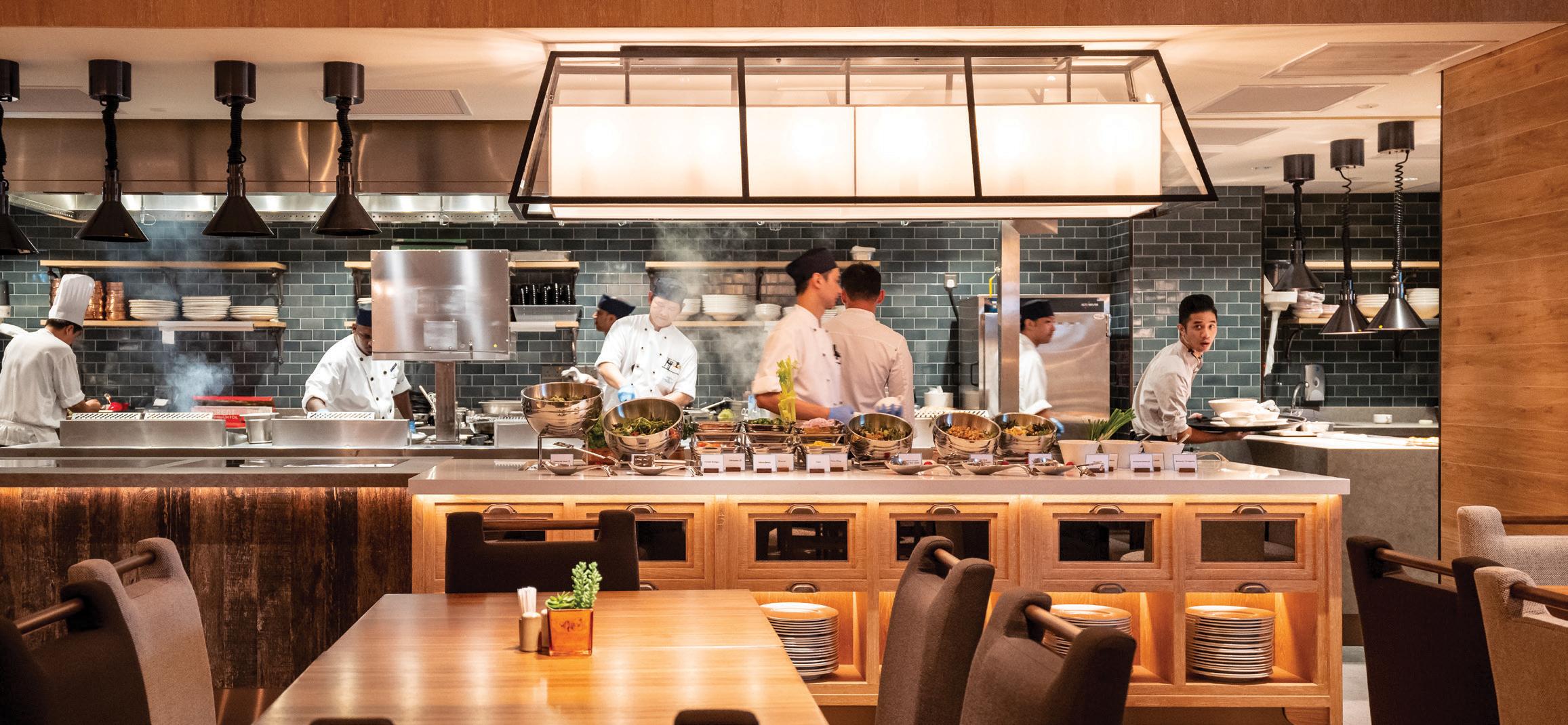

By Sorelle Henricus
With its vibrant culture, thriving economy, and large expat community, Singapore offers a fertile ground for freelancers. Whether you're a seasoned professional looking for a change of pace or you've recently arrived eager to start your own business, this city-state has a lot to offer.
So, how do you make the most of Singapore's dynamic economy as a business owner?
The key is to find your niche and demonstrate your unique value. Think about what you're good at, what you're passionate about, and where you can make a difference. Whether you're a designer, creative professional, developer, or consultant, finding a niche that sets you apart will help you build a strong reputation and attract clients.
Leverage your skills and knowledge to offer something unique and valuable to the Singaporean market.
For example, a freelance graphic designer with a passion for sustainable design could specialize in creating eco-friendly packaging. By showcasing their expertise in sustainable design principles and their ability to create visually appealing and functional packaging, they can position themselves as a valuable resource for companies seeking to reduce their environmental impact.
Participating in in-person networking events around the city can be a great way to connect with potential clients and expand your network. Singapore offers a lively networking scene with the opportunity to meet other business owners, find leads, and build relationships. The American Association

of Singapore has a monthly meetup for freelancers and entrepreneurs where we swap ideas, share challenges, and refer each other to potential customers.
Singapore is a digitally advanced economy, and following up on inperson meetings with a strong online presence is essential for converting warm leads into paying customers. Setting up a website or social media page that clearly states your services for the Singapore market is well worth your time. The options are endless, with social media networks and video platforms being popular ways to get the word out about your business.
Remember to highlight your corporate experience or work in other markets as a valuable asset. This can help you differentiate yourself from competitors and demonstrate your expertise.
You can turn your entrepreneurial aspirations into reality by identifying your niche, building a strong online presence, and actively networking. So, take the plunge, embrace the challenges, and reap the rewards of being your own boss in this vibrant city-state.
The AAS Freelancer and Entrepreneur meet-up occurs every last Wednesday of the month. Check the AAS events calendar for time and location.
By Glenn van Zutphen Founder, CEO VanMedia Group Pte Ltd

Small and Medium Enterprises (SMEs) are the backbone of many economies, especially in Singapore. Each year, when the Singapore Government releases its annual budget, SMEs are prominently mentioned and lauded for their role in supporting the local economy. In a region as dynamic and diverse as Southeast Asia, SMEs drive innovation, create jobs, and foster economic growth.
The definition of an SME varies across regions, but generally, it refers to businesses with fewer than 250 employees, micro-enterprises (fewer than ten employees), and small enterprises (10 to 49 employees). If you’re running an SME here or considering starting one (even as a solopreneur), you need to know the business landscape and adopt strategies that not only align with local market conditions but also leverage regional opportunities. If you search online for “how to start a business in Singapore,” there are any number of companies that will help you do the paper and strategy work to get up and running.
Let’s assume a few relevant points:
• You have a product or service that you believe the market needs
• You have an entrepreneurial spirit and are good at working independently
• You have the financial backing or deep pockets to fund start-up costs
• You’re not easily discouraged (it can take months/years to get a business on solid footing)
• You know how to use productivity tools to help maximize your time (I consulted ChatGPT for this article, and I use Canva and other tools daily)
The government here makes it relatively easy to start a company. Look at these sites:
• startupsg.gov.sg
• gobusiness.gov.sg/start-a-business
• edb.gov.sg/en/setting-up-insingapore/how-to-set-up
As an entrepreneur and microenterprise founder for 18 years, I believe the following strategies and considerations will help SMEs in Singapore and across Southeast Asia.
Understanding the local market is crucial for any SME. Southeast Asia has diverse cultures, consumer behaviors, and regulatory environments. Singapore’s market is highly developed, with a tech-savvy population and strong government support for innovation. Neighboring countries like Indonesia, Malaysia, and Vietnam have large, young populations and rapidly growing middle classes but may also present challenges related to infrastructure and regulatory frameworks. To succeed, SMEs must conduct thorough market research to understand their target customers’ specific needs and preferences in each country.
Southeast Asia’s dynamic economies increasingly embrace digitalization, presenting significant opportunities for SMEs to leverage technology to reach new customers, improve efficiency, and enhance competitiveness. In Singapore, the government actively promotes digitalization through initiatives like the SME “Go Digital” program, which provides grants and resources to help businesses adopt digital solutions. The American Chamber of Commerce



in Singapore has its “SME ACCelerate” page “to support the growth and health of SMEs through strategic partnerships, operational support, and training and development.” This microsite contains valuable content, including an SME membership directory and sections focusing on online skills development, digitalization, women in business, and wellbeing.
In a competitive market, a welldefined brand is key to differentiating your business from competitors and building customer trust. In Southeast Asia, where word-of-mouth and community relationships are influential, maintaining a positive reputation can significantly impact your business's success. To build a strong brand, SMEs should focus on consistently delivering highquality products or services through appropriate sales and media (social, digital, and traditional) channels and participation in local events.
Navigating Southeast Asia’s regulatory and business environments can be challenging due to the varying laws and regulations across different countries. Singapore, for example, is known for its business-friendly
environment, with transparent regulations and strong intellectual property protections. However, other countries in the region may have more complex regulatory frameworks. Engaging with local legal and business advisors can help SMEs navigate these complexities and avoid potential pitfalls. The ASEAN Economic Community (AEC) provides opportunities for businesses to access a larger market with reduced trade barriers and harmonized regulations. The US-ASEAN Business Council is an advocacy group that pushes for economic growth and trade ties between US businesses and the Association of Southeast Asian Nations' ten member countries and often works with regional governments on key trade and regulatory issues.
Human capital is a critical asset for SMEs, and attracting and retaining talent is essential for long-term success. In Southeast Asia, the availability of skilled labor can vary significantly from country to country. With its strong education system and highly skilled workforce in specific skills, Singapore does not always meet the needs of companies here. This leads some to off-shore labor if
they cannot get the help they need incountry. Other parts of the region may also pose similar talent challenges.
Being a successful SME in Singapore and Southeast Asia requires a deep understanding of the local market, leveraging technology, building a strong brand, adapting to the regulatory environment, focusing on talent development, and exploring regional opportunities. It’s not an easy life by any stretch of the imagination. But if you have passion for what you’re doing and you don’t mind a few sleepless nights along the way, working in this dynamic market and region can be extremely rewarding.
Glenn van Zutphen is the Founder and CEO of VanMedia Group Pte Ltd and the host of MoneyFM 89.3’s “Saturday Mornings” national radio show here. He is a former American Association President, Vice-President and Board Member. An active writer, he coauthored the business marketing book Happy Customers Everywhere (2016), contributed chapters to The American Journey in Singapore (2017), and Living in Singapore Reference Guide (2008-2023).

By Richard Hartung
In 2016, Eric Barbier was just setting up Thunes and working hard to grow its small payments platform business in Singapore’s relatively new fintech sector. In its latest round of funding this year, the firm reported about three billion mobile wallet accounts and had a US $900 million valuation.
Long before that, in 2009, Stanfordeducated Forrest Li set up Garena as a gaming platform and gradually attracted legions of online game players. He described his role long ago as ranging from setting strategy to cleaning the toilets in a cash-strapped startup. Since then, Garena has morphed into SEA, operating in sectors ranging from e-commerce to banking –and, yes, gaming – with a valuation of about US$45 billion.
While Singapore may be viewed as a nation of large multinationals and small low-tech businesses, it’s also a global hub for start-ups. The country has more than 4,500 start-ups and more than 200 incubators and accelerators that
help these fledgling firms grow their businesses. According to Crunchbase, Singapore also has the highest investment in start-ups per capita in the world, exceeding even the US.
The start-ups work in a multitude of sectors. The number of financial technology (fintech) start-ups in Singapore has skyrocketed, with the Singapore Fintech Association burgeoning from fewer than 100 corporate members in 2016 to more
than 800 today. Even though the environmental sustainability sector may look small, investor group Asia Sustainability Angels has analyzed more than one hundred Singaporeheadquartered sustainability-focused start-ups in recent years. The deep technology sector grew more than 30 percent in 2023, according to the Business Times, which reported EnterpriseSG chairman Lee Chuan Teck saying that about 25 percent of venture


capital investments into start-ups go into deep tech, above the global average. Start-ups also abound in sectors ranging from e-commerce and HR to food and fashion.
While many of the founders of these start-ups are Singaporeans, they come from around the world. Europeans, Americans, Indians, Australians, and a multitude of other nationalities have founded outstanding start-ups in Singapore.
Several factors make Singapore attractive. One is simply how easy it is to set up a company, as registration can take hours rather than months. The government has set up Tech.Pass to make it easier for some entrepreneurs to start a business in Singapore.
EnterpriseSG chairman Lee also said he believes Singapore’s research institutes have a depth of intellectual property (IP) that can be translated into commercial use by start-ups.
Moreover, funding is available from a variety of sources. Various government agencies provide grants or other financial support, including organizations ranging from Startup SG and A*Star to university-related programs such as NUS GRIP and
NTUitive. Giant private equity firms such as KKR and TPG have offices in Singapore. There are more than 1,000 venture capital firms, as well as family offices such as Silverstrand, that invest in early-stage start-ups. A variety of angel investor groups, as well as accelerators, provide funding for early-stage start-ups as well. Plug and Play and 500 Global, for instance, invest in start-ups and run accelerators to help them grow. Groups of angel investors invest at earlier stages, too, with examples including XA Network investing in a range of tech sectors, Asia Sustainability Angels mitigating climate change by investing in sustainabilityfocused start-ups, and EPIC Angels investing in femalefounded start-ups.
So, what are some interesting firms? While each person is different, several stand out for this writer. Arkadiah, for instance, uses geospatial analytics to evaluate forests and carbon credits. HappyIce has
reduced electricity usage in ice cream vending machines by up to 80 percent. Environmental Technologies recycles diapers. Crust Group makes beer from leftover bread, while Kosmode uses leftover grain from food waste to produce noodles.
The start-up scene in Singapore shows how creativity is indeed turning into results, often below the radar screen, and how anyone with a good idea and persistence can work at turning their dream into reality.
Richard Hartung is a co-founder of Asia Sustainability Angels and a director at Digital Mission Ventures.

By Kyle D. Hegarty
Here is the first lesson for managing people across cultures: don’t be a seagull.
Seagulls are those big, awkward birds that fly in from out of nowhere that squawk a lot, and then fly away leaving behind a giant mess. Anyone who has worked for an international organization has likely encountered a seagull manager.
These bosses operate all over the world and they are easy to spot because they often run unhappy, dysfunctional and underperforming teams. One of the most common reasons seagull managers fail in crosscultural teams is because they don’t effectively adjust their working and communication style to align with their teammates.


It turns out there is a lot of variation when it comes to how people like to work worldwide.
With the growing talent crunch in Singapore and elsewhere, cracking the code of cross-cultural team management has become more important than ever.
How to overcome these challenges? There is no shortage of research on managing people across cultures. Books, lectures and trainings abound. The tricky part is putting this knowledge into practice. I wanted to find real managers who have overcome these cross-cultural obstacles to see how they got things done and that’s when I found Axel.
would
to lunch twice each day. When he visited his company headquarters in London, he would frequently sneak out of the office early and head to the pub with colleagues. Now it may sound as if this guy didn’t work that much, but Axel was one of the most effective managers of crosscultural teams I have ever met.
He wasn’t a seagull. Nope. He was a chameleon, able to adapt to any working environment. He knew when to speak up and when to have patience. Whenever possible, I used to follow him around in the hope of understanding how he was so successful at working with people across the planet.
Axel believed that managing crosscultural teams included two critical pieces: relationship building and communicating.
Why two lunches? Axel noticed that lunch was a main source of socializing and relationship building in certain parts of the world, including Singapore. During his time in the United States, he observed the opposite behavior where workers would inhale a sandwich at their desks while either catching up on the news or doing work. This was not the case in other parts of the world. In markets such as Singapore, Axel would go to lunch with one group, and go out again with another group who ate later. He understood that to grow a business globally, relationships had to be built locally.
Axel didn’t judge. He adjusted
For example, foreign managers frustrated with a lack of results would tell their Singapore team to shorten, or skip, lunch until a project got finished. While this might solve an immediate issue, relationships with teams suffer and trust and confidence dissolve. In other words, it’s not how things are done around here.
In London, building relationships was more likely to happen in a pub. Imagine if a Singaporean manager told a UK team they couldn’t meet for drinks after work. There might be a riot.
One tool called “ultimate active listening” is used at the end of conversations and involves the listener playing the entire conversation back to make sure everything has been understood correctly. This is especially helpful when there are language barriers or for remote managers who do not have the same ability to check in on how a project is progressing. Ultimate active listening should be brief, ideally summarizing what was said in only a few sentences. And then – this is critical – confirm everyone understands key points and next steps correctly.
It wasn’t just Axel who had lessons to teach about managing foreign teams. One Singaporean who I’ll call James Lee was a master at communicating ideas and persuading colleagues from other regions. His secret was the much discussed, but frequently underutilized, power of storytelling.
James understood that his company’s headquarters based in the US did not know a lot about what was happening on the ground across his ASEAN region.
Other managers got this messaging wrong, either giving their headquarters too much information or not enough. Either way, executives back at HQ would get suspicious and start micromanaging ineffectively from a distance.
James had found the right mix of delivering enough information without overdoing it. Specifically, when updating his boss on the other side of the world, he would start with a small story, often something a bit salacious or novel, to catch his listener’s attention. Then he would add relevant data. Anecdotes were helpful, but adding evidence created the magic sauce that led to his ability to persuade his audience. James would then explain why his boss needed to know (such as he was either helping her either make or save money), then he would wrap with another story that drove home his point including whatever next step he wanted. He made it sound natural, but – on closer inspection – he was working off a storytelling formula.
When it comes to managing across cultures, persuasion happens when strong data meets a good story. Here is James’ formula: a story that catches attention – provide data – back to a story – conclusion. This is not the only
way to do it, but it was repeatable, and it was effective.
Great leaders have much to teach us about working across cultures. By focusing on building strong relationships and strengthening communication, both Axel and James were able to bridge gaps that cause so many teams to stagnate. Axel’s particular focus on reducing unproductive group meetings and replacing them with more important informal conversations and James’ techniques to win over overseas colleagues are lessons to emulate. When it comes to the future of working across cultures, seagulls need not apply.
Kyle D. Hegarty is a business consultant and author based in Singapore. His book, The Accidental Business Nomad: A Survival Guide For Working Across A Shrinking Planet, won the 2021 Axiom Business Book Award. The article includes excerpts from his book.


Courtesy Raffles Medical Group
Reviewed by Dr Michael Wong, Family Physician, Consultant, Raffles Medical
Mpox’s Origin
Mpox is a viral disease that is caused by infection with monkeypox virus (MPXV). It is an emerging zoonotic disease caused by the MPXV, a member of the Orthopoxvirus genus in the Poxviridae family, which also includes cowpox, horsepox, smallpox (variola), and vaccinia viruses.
MPXV is endemic in parts of Central and West Africa, where two distinct clades of MPXV, Clade I (formerly Congo Basin clade) and Clade II (formerly West African Clade), circulate in different geographical regions.
Prior to 2022, the main geographic risk area of endemic mpox transmission has been in Africa, where animal-tohuman transmission may occur from close contact with infected animals, preparation of bush meat, or direct contact with contaminated tissues and bodily fluids.
Symptom-presentation of both genetically distinct variants of monkeypox virus – Central (Clade I) and West Africa (Clade II ) are indistinguishable.
Human infections with the West African clade appear to cause less severe disease compared to the Congo Basin clade.
Global outbreak of MPXV Clade II (2022-2023)
Since May 2022, an mpox outbreak of MPXV Clade II began to occur on an international scale representing the first known instance of sustained transmission chains in countries without direct or immediate epidemiological links to areas of West or Central Africa.
Human infections of Clade II remain mostly driven by sexual transmission, primarily in the high-risk groups including men who have sex with men (MSM).
The WHO has assessed the global risk for mpox Clade II to be moderate.

Ongoing outbreak of MPXV Clade I in the DRC (2023-2024)
It was also reported that since 2023, there has been an increase in the number of MPXV Clade I cases reported by the DRC. The outbreak had spread to previously unaffected provinces and into urban settings driven by sexual and non-sexual direct contact.
Since July 2024, at least five other countries in the region, including those where MPXV Clade I was not endemic, have also reported mpox cases and outbreaks. The current upsurge of MPXV Clade I in parts of Central and East Africa and the cross-border spread is concerning as MPXV Clade I is known to cause more severe disease.
On August 14, 2024, the World Health Organisation (WHO) declared that the mpox outbreak in the Democratic Republic of the Congo (DRC) and a growing number of countries in Africa constituted a Public Health Emergency of International Concern (PHEIC).
Current global situation
As of June 2024, the 10 countries most affected globally by mpox infections are: United States of America (33,191), Brazil (11,212), Spain (8,084), France (4,272), Colombia (4,249), Mexico (4,124), The United Kingdom (3,952), Peru (3,875), Germany (3,857), and Democratic Republic of the Congo (2,999).
By August 16, 2024, countries that have reported mpox Clade I cases are:
• Burundi, Cameroon, Central African Republic, Democratic Republic of the Congo, Gabon, Kenya, Republic of Congo, Rwanda, Uganda
• Sweden – this case had prior travel history to an affected country in Africa and was infected there.
The WHO has assessed the risk of mpox to the general population in the eastern DRC and neighboring countries and other areas of the DRC (Clade I) as high, and in Nigeria and mpox-endemic countries in West, Central and East Africa (Clades I and II) countries as moderate.
How mpox is transmitted
Transmission occurs when a person comes into close contact with the virus through an infected animal, infected person or contaminated materials and environment.
Animal-to-human transmission may occur via:
• Bite or scratch from an infected animal
• Bush meat preparation
• Direct contact with the blood, body fluids, skin, or mucosal lesions of infected animals

Human-to-human transmission is limited but can occur via:
• Exposure to respiratory droplets
• Direct physical contact with the blood, body fluid, or skin rash from infected individual or contaminated materials
Within one to three days after the onset of fever, an infected person develops a rash, often starting from the face before spreading to other parts of the body, including the palms and soles. The rash, which is often concentrated on the face and extremities, progresses uniformly to become fluid-filled vesicles and then pustules, before crusting occurs in approximately 10 days before falling off. A full recovery may take about three weeks. An infected person is contagious from onset of fever until the skin lesions have scabbed over.
How mpox is diagnosed
Detection of viral DNA by polymerase chain reaction (PCR) is the preferred laboratory test for mpox. The best diagnostic specimens are directly from the rash – skin, fluid or crusts, or biopsy where feasible. In the absence of skin lesions, testing can be done on oropharyngeal, anal, or rectal swabs.
Blood testing is not recommended, and asymptomatic contacts do not require testing.
Treatment for mpox
Mpox is typically a self-limiting illness, with symptoms usually resolving spontaneously within 14 to 21 days. Treatment is typically symptomatic and supportive.
De-isolation of ill contacts should be done only when:
• No new rashes have developed for at least 48 hours.
• All rashes have crusted over, all scabs have dropped off, with fresh intact skin underneath.
There is no requirement for laboratory testing such as blood, urine, or throat PCR testing prior to de-isolation.
Complications
The disease is usually self-limiting, with most patients recovering within two to three weeks.
However, in some cases the virus can cause serious complications such as pneumonia, sepsis (blood infection), encephalitis (brain inflammation), and eye infection with ensuing loss of vision. Newborns, children, and people with underlying immune deficiencies are at higher risk of severe complications and death.
MPXV Clade I is known to cause more severe disease (recorded case fatality rate of about 3 to 4 per cent in the DRC) than the MPXV Clade II (case fatality rate of about 0.2 per cent).
Prevention
1. Maintain a high standard of personal hygiene, including frequent hand washing after going to the toilet, or when hands are soiled. If water is not available, use an alcohol-based hand sanitiser that contains at least 60 per cent of alcohol.

current data remains limited in concluding the level and duration of protection conferred by vaccination.
2. Avoid direct contact with skin lesions of infected living or dead persons or animals, as well as objects that may have become contaminated with infectious fluids, such as soiled clothing or linens (e.g bedding or towels) used by an infected person.
3. Avoid sharing common items that may be contaminated with bodily fluids.
4. Put on a mask to prevent inhaling infected respiratory droplets if you are caring for an infected person or in prolonged close proximity to ill contacts.
5. Avoid contact with wild animals that could harbor the virus, and consumption of bush meat.
6. Practice safe sex, including avoiding high-risk sexual activities such as having multiple sex partners or engaging in casual sex.
7. Returning travelers, especially from areas affected by mpox should seek immediate medical attention if they develop any disease symptoms (e.g sudden onset of high fever, swollen lymph nodes, and rash) within three weeks of their return. They should call the clinic ahead of their visit, so that special precautions can be taken to protect others. They must inform their doctor of their recent travel history.
8. Vaccination – the MVA-BN (JYNNEOS) vaccine is a live but non-replicating, third-generation smallpox vaccine, which has efficacy in preventing smallpox, mpox, vaccinia, and other orthopoxvirus infections.
While JYNNEOS is estimated to provide over 80 per cent protection against mpox,
The vaccine consists of two doses, given 28 days apart, and is approved by US FDA for prevention of smallpox and mpox in adults 18 years and older. Since August 9, 2022, JYNNEOS has been authorised by US FDA for people aged <18 years old.
It may be recommended for certain high-risk groups such as:
• Men who have sex with men
• People with multiple sex partners
• Sex workers
• Post exposure prophylaxis (PEP) – for persons who have already had unprotected close contact with a confirmed mpox case. It should be given within four days of exposure for optimal effectiveness in preventing disease.
In line with international recommendations, mass population-wide vaccination is currently not recommended as a preventive strategy for mpox, as the risk to the general public remains low with disease transmission predominantly via close physical or prolonged contact.
9. Areas exposed to mpox cases should be cleaned with bleach-based disinfectants (i.e 1,000ppm). Adjunct use of UV-C disinfection system or hydrogen peroxide vaporisation (HPV) is recommended, if available. Personnel involved in cleaning and disinfection should don full personal protective equipment.
